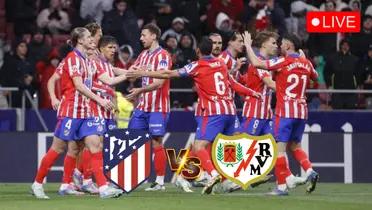How did the barras get into Mexican soccer, which triggered the Liga MX brawl?
The tragedy that occurred in the Querétaro vs Atlas match has its origins in the 90s.

After the tragedy that occurred in the Queretaro vs Atlas match yesterday, everyone is wondering, how did the barras come to Mexican soccer, which detonated the fight in Liga MX?
More news about Liga MX:
Was the tragedy that occurred in the Liga MX match Atlas vs Querétaro premeditated?

The question is very important to understand how it was possible for such a tragedy to happen in a game where there were families who had to flee the stands to take shelter from the violence.
How did the barras come to Mexican soccer?
According to Mexican media reports, the barras arrived in Mexico in 1996 through Andrés Fassi, who at the time was the owner of Grupo Pachuca and vice-president of the Tuzos.
Before continuing, the barras, or "animation groups", as they are also known, are organized groups of fans of soccer clubs that attend matches and support their teams.

Unfortunately, however, these groups have also clashed with other rival barras, causing events such as the tragedy that occurred yesterday at the Corregidora Stadium in Querétaro.
These groups, which used to be common only in Central and South America, arrived in Mexico when Fassi traveled to Costa Rica to close the signing of Rolando Fonseca to take him to the Tuzos.
However, on that trip, the manager also met the Saprissa barra, which left him with the desire to implement something like this in Mexico, especially because of a recent experience he had had with his team.
In that year of 1995, Pachuca had just lost the final for promotion to Liga MX against Celaya, and Fassi had in mind that the atmosphere in the stadium was very subdued.

1996: the year of the debut of the barras in Liga MX
With this idea in mind, the manager returned from Costa Rica with the Chilean Eduardo "Lalo" Gonzáles Tapia and the Costa Rican Jorge "Chino" Díaz, who, just as they had created the Saprissa barra, were in charge of creating the "Ultra Tuza".
With this project, the Pachuca barra took shape and on January 25, 1996, the "Ultra Tuza" made its debut in Mexican soccer, in a match between the Tuzos and Club América.

And just half a year later, when Pachuca was promoted to the First Division of Mexican soccer, the barra also rose with them, and other Liga MX clubs decided to replicate this model.
What other barras exist in Liga MX?
From that point on, barras began to proliferate in Liga MX and the following barras emerged, which are the best known in Mexican soccer.
La Irreverente and Legión 1908, from Chivas.
La Monumental, and Ritual del Kaoz, of Club América
La Perra Brava, of Toluca
La Adicción Rayada, of Monterrey
Los Lokos de Arriba, of Leon
La Rebel, from Pumas UNAM
Los Hijos del Kraken, from Mazatlan FC
La Masakr3, from Xolos de Tijuana

More news about Liga MX:
Liga MX brawl: After the Querétaro-Atlas match, the visiting teams' supporters' clubs are suspended
More news

LIVE | Whitecaps vs Inter Miami: First Leg Semifinal of the CONCACAF Champions Cup
25/04/2025

Real Madrid suffer: The tough news ahead of Copa del Rey clash with Barcelona
25/04/2025

This is how Mbappe reacted to Vinicius' potential new deal with Real Madrid
24/04/2025

Barcelona fears: The three teams wanting to take Raphinha from Barcelona
24/04/2025

Not MLS: The unexpected destination that awaits Kevin De Bruyne
24/04/2025

The most conroversial moments | Atlético Madrid 3-0 Rayo Vallecano: Matchday 33 of the LALIGA EA SPORTS Full-Time
24/04/2025

The most controversial moments | Bologna 2-1 Empoli: Semifinals of the Italian Cup Today Full-Time
24/04/2025

World of Football Stunned: Angel Di Maria has a new team and here’s which one it would bee
24/04/2025

Vancouver Whitecaps vs Inter Miami: Concacaf Champions Cup 2025 Semifinal First Leg Preview and Broadcast Guide
24/04/2025

The huge news Hansi Flick gave Barcelona before facing Real Madrid
24/04/2025

End of the mystery: the decision Vinicius Jr. made regarding his future at Real Madrid
24/04/2025

The most controversial moments | Tigres 1-1 Cruz Azul: First Leg Semifinal of the CONCACAF Champions Cup Full-Time
24/04/2025

The most controversial moments | Getafe 0-1 Real Madrid: Matchday 33 of the LALIGA EA SPORTS Full-Time
23/04/2025

Tigres UANL vs Cruz Azul: Concacaf Champions Cup 2025 Semifinal First Leg Preview and Broadcast Guide
23/04/2025

Getafe vs Real Madrid: LaLiga 2024-25 Matchday 35 Preview and U.S. Broadcast Guide
23/04/2025

Inter vs Milan Preview and U.S. Broadcast Guide: Coppa Italia 2024-25 Semifinal Second Leg
23/04/2025

Arsenal vs Crystal Palace: Premier League 2024-25 Matchday 34 Preview and U.S. Broadcast Guide
23/04/2025

Atletico Madrid's Stance on Angel Correa: The Clubs Interested in His Move
23/04/2025



